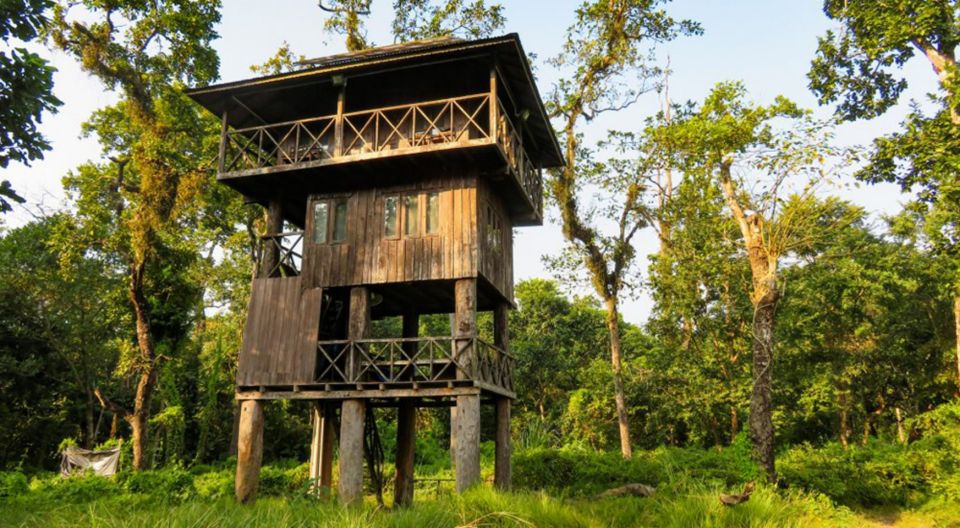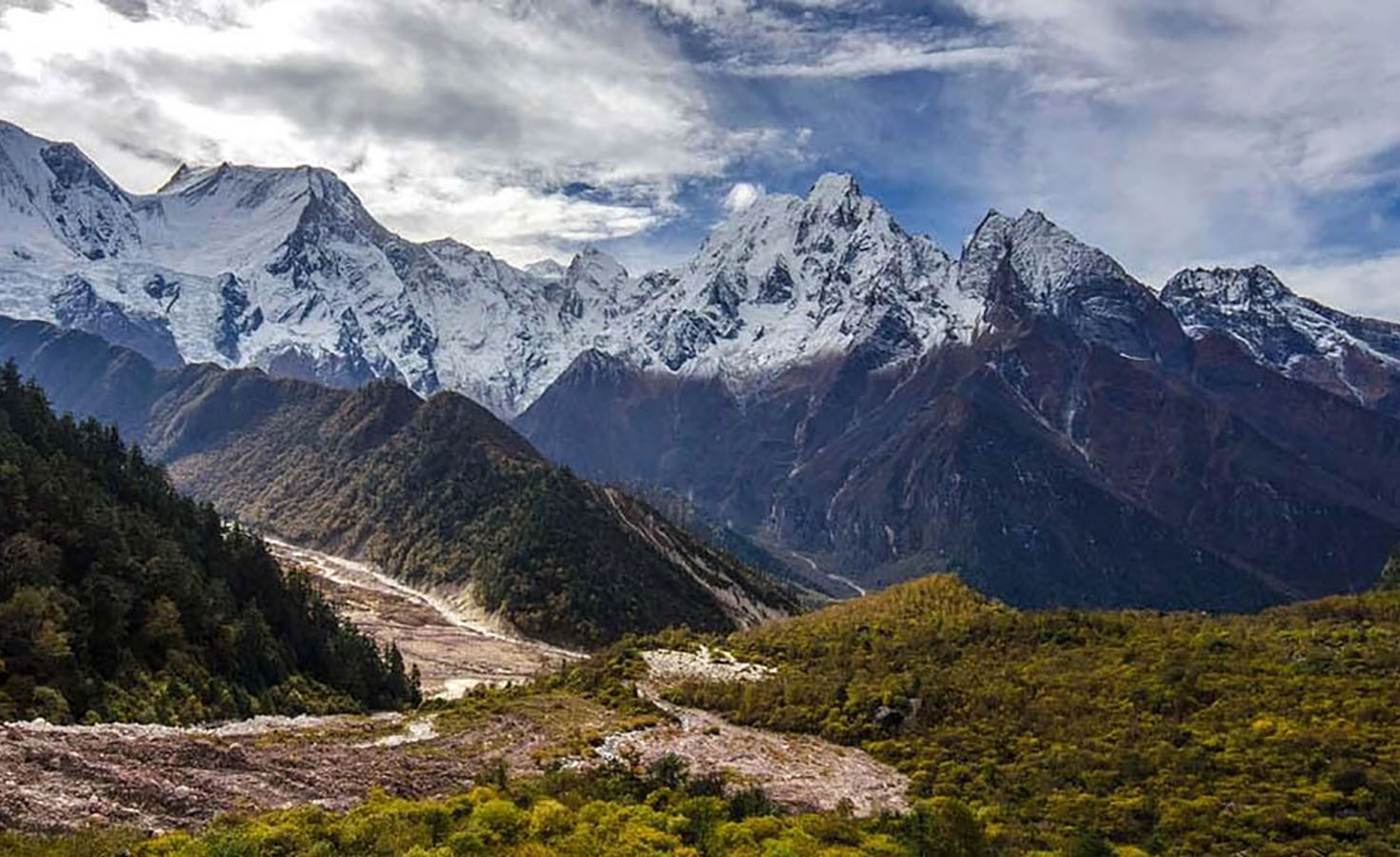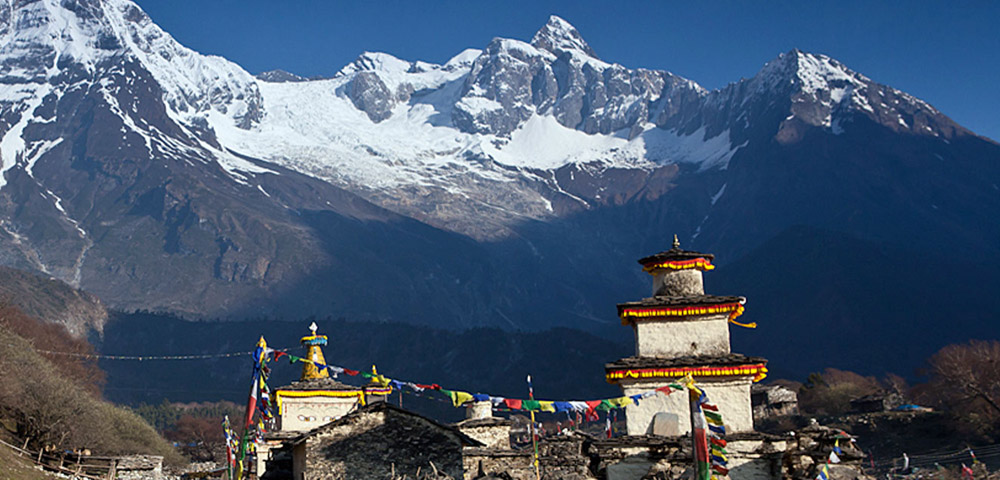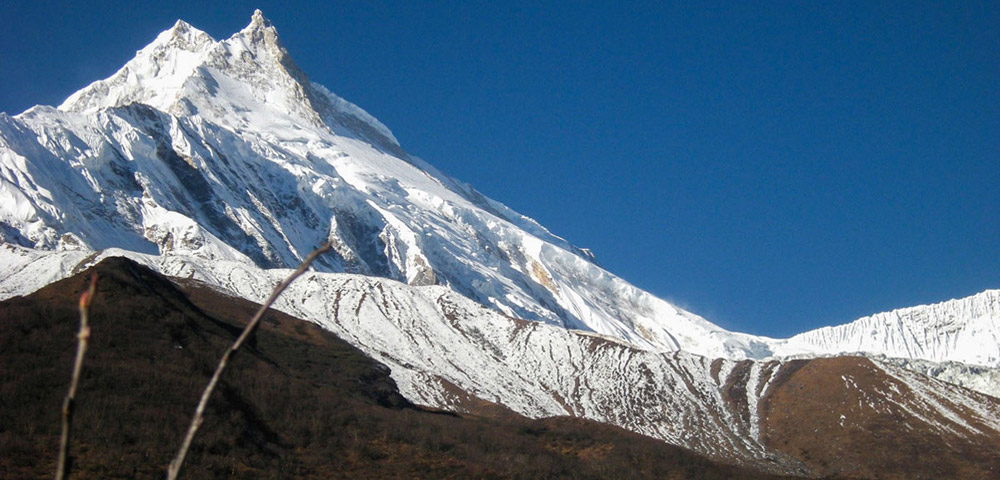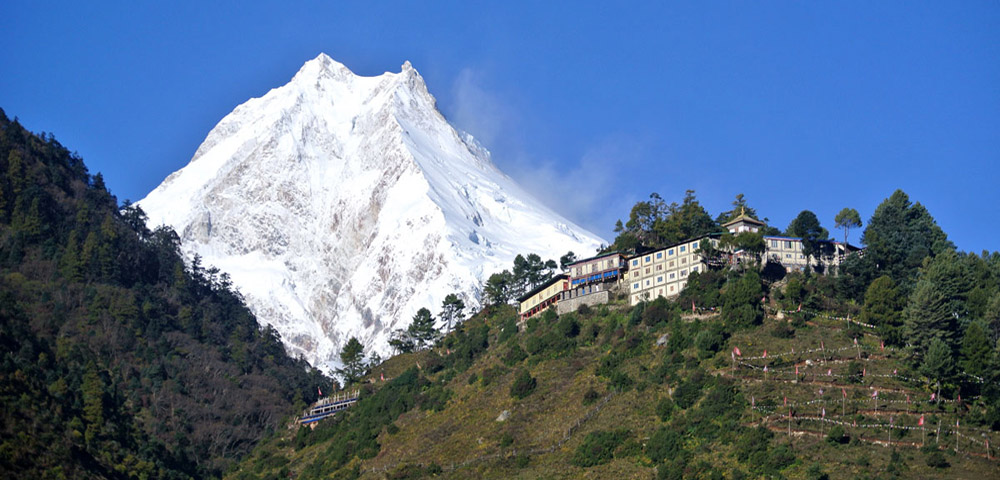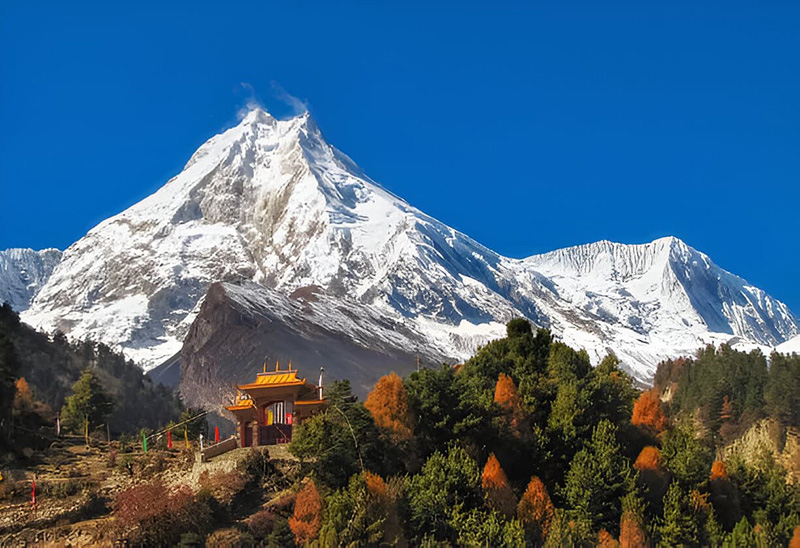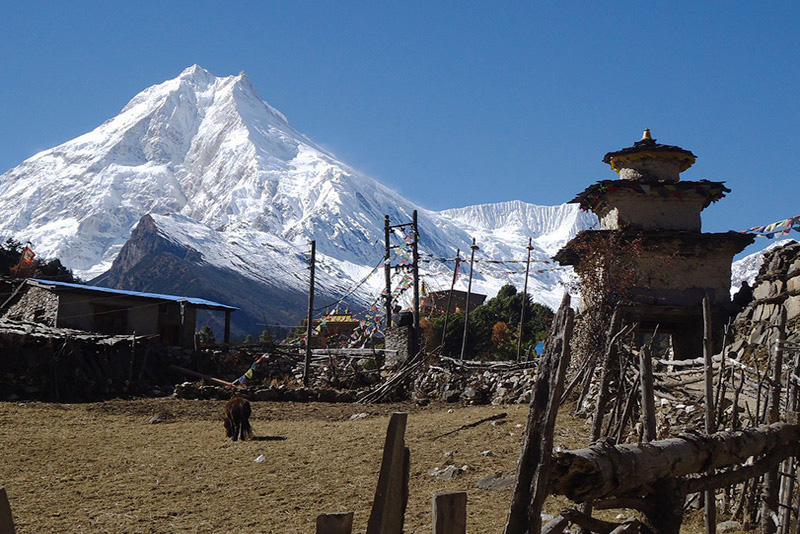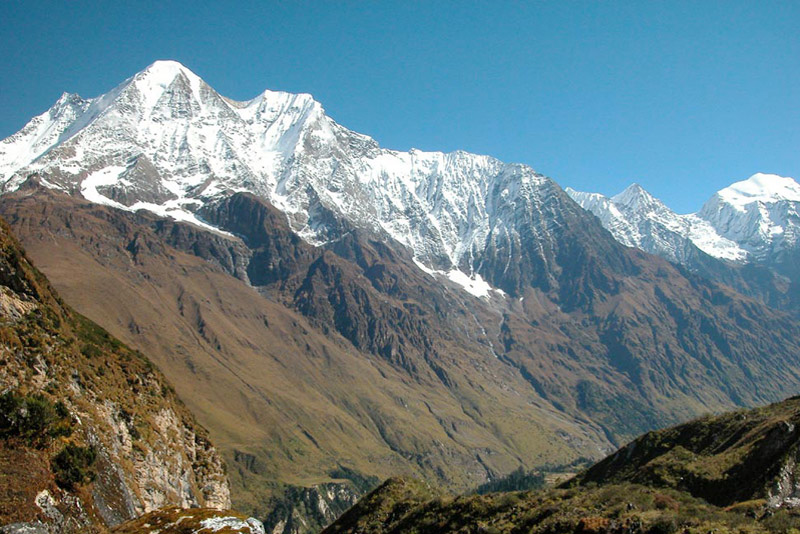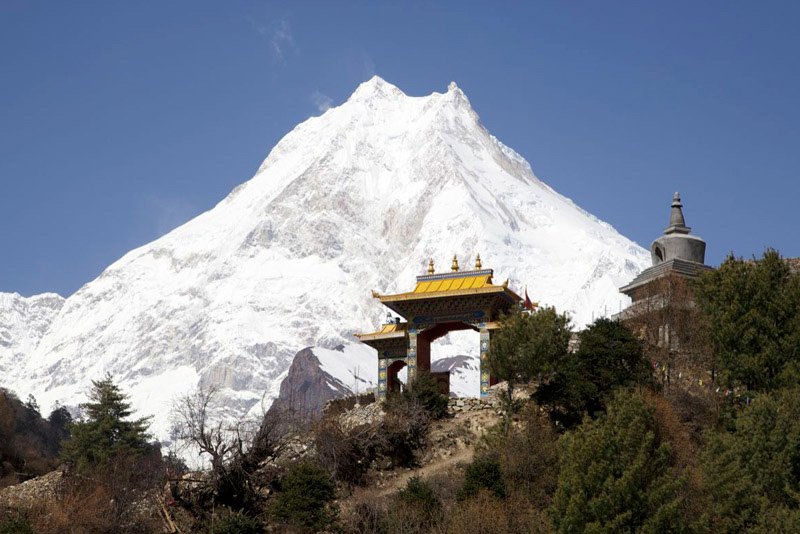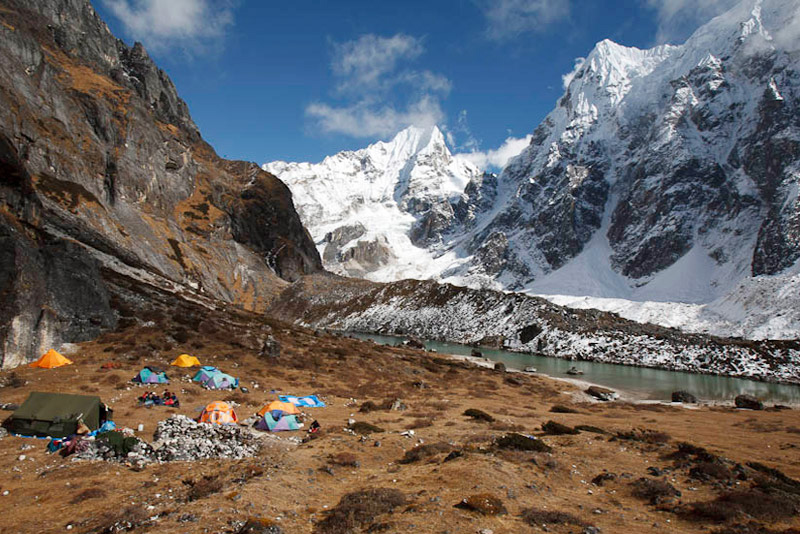Rupina-La Pass Trek
The Rupina La Pass Trek is a relatively lesser-known trekking route in Nepal that offers a combination of natural beauty, cultural experiences, and challenging terrain. This trek takes you through remote villages, diverse landscapes, and culminates in crossing the Rupina La Pass.
Rupina La is located in the Gorkha District within the Manaslu Region. This is a difficult hike due to the rough pass. Rupina La Pass is located in the lower portion of Manaslu and offers breathtaking views of Manaslu (8,163 meters), Himal Chuli (7,893 meters), Boudha Himal (6,670 meters), Peak 29 (7,873 meters), Ganesh Himal ranges, and Langtang Himal ranges. The Rupina La Pass Trekking is influenced by Tibetan culture. We trek to both Rupina La and Larkya La. This pass is tough not because of its altitude, but because many trekkers miss their way. This is the concealed portion of Manaslu. The Nepalese government officially opened this route in 1991. In this region, there are no lodge accommodations available. Therefore, we must undertake the camping expedition in this region.
The Rupina La Trek begins with a drive from Kathmandu to the old city of Gorkha. It takes around six hours by bus to reach Dharchey through Thala, where the Manaslu Circuit walk begins. There is also an alternative route that follows the Daraundi Khola. We reach Rupina La Phedi and pass the Rupina La Pass as we continue to trek. We next descend to Jagat and finish our trip in Aarughat Bazaar in the Gorkha District. There are other ways to complete Trek Rupina La, including Tsum Valley, Beshishahar, and others. Rupina La Pass walk offers a unique rural experience in the unknown Himalayan landscape of northern Gorkha, as well as well-preserved cultural norms and values. Rupina La Pass is a once-in-a-lifetime trek for physically fit and healthy individuals who desire an adventure experience.
Rupina-La Pass Trek Highlights
Rugged Landscapes: The trek offers a variety of landscapes, from lush forests and terraced fields to high alpine meadows and rocky terrains. The ever-changing scenery adds to the appeal of the journey.
Cultural Encounters: The trek takes you through remote villages inhabited by different ethnic groups, including Gurung, Tamang, and Magar. You’ll have the opportunity to interact with locals and learn about their cultures and way of life.
Challenging Pass Crossing: The trek involves crossing the Rupina La Pass (4,720 meters), which offers panoramic views of the surrounding mountains and valleys. This challenging portion adds a sense of accomplishment to the trek.
Nangla Village: The picturesque village of Nangla is known for its traditional houses, friendly locals, and the tranquil environment. It provides insights into rural Nepali life.
Natural Hot Springs: The trek passes through the natural hot springs of Tatopani, offering a relaxing opportunity to soak and rejuvenate after days of trekking.
Scenic Views: The trek offers breathtaking views of Himalayan peaks, including Manaslu, Ganesh Himal, and Langtang ranges.
Off-the-Beaten-Path: The Rupina La Pass Trek is less crowded compared to popular trekking routes, providing a quieter and more secluded trekking experience.
Camping Experience: The trek involves camping in serene locations, allowing you to immerse yourself in the natural surroundings.
Local Cuisine: You’ll have the chance to savor traditional Nepali cuisine and experience the hospitality of the locals.
Less Touristy: The trek is ideal for those who prefer to explore less-touristy areas and seek a more authentic and remote trekking experience.
The Best time for Rupina-La Pass Trek
The best time for the Rupina La Pass Trek is during the pre-monsoon spring season (March to May) and the post-monsoon autumn season (September to November). These months offer the most favorable weather and trekking conditions for a successful and enjoyable trek. Both spring and autumn offer excellent trekking conditions, and your choice between the two depends on your preferences. Spring is known for its vibrant flora, lush landscapes, and blooming flowers, while autumn provides clear skies, pleasant temperatures, and excellent photography opportunities.
When you arrive at Tibhuvan International Airport, our guide will pick you up and take you to your hotel in the bustling Thamel district of Kathmandu. Depending on your arrival time, you can choose to relax for the next journey, see the city’s attractions, or shop for adventure gear in one of Kathmandu’s many adventure supply stores. We’ll assemble our bikes and be ready for the journey in the afternoon.
We drive from Kathmandu to the historical site of Gorkha. The bus ride takes roughly six hours. Kathmandu is 142 kilometers west of this location. Take the Prithivi Highway to Gorkha, turn right at Aabu Khaireni, and pass Daraunda Khola while ascending a gentle hill. After arriving in Gorkha, we trek one hour to Kalikasthan, where we will camp for the night.
From Kalikasthan, we begin our trip to Gairichap after breakfast. The ascent from Kalikasthan to the Mountain View takes around six hours, during which time we pass through picturesque landscapes and see the glistening Mountain View.
The trek from Gairichap to Thala would be enjoyable, with a moderate ascent and descent along a smooth path and a considerable amount of walking. Thala is the Gurung settlement where we can observe their dance and ritual activities. There are additional locations named Sirankot that have significant historical significance. We still find remnants of Chaubise Rajyas palaces. People have proper coordination when forming Ramche Aama Buwa Samuha and cooperating.
Following breakfast, we travel to Dharchy Danda. This is an uncharted path with pristine nature, intact culture, and breathtaking views. The scene at Dharchey is breathtaking. Dharchey Danda is known as Gorkha District’s Poon Hill. In the north-eastern section of Gorkha, this hill has immense religious significance. This is an easily accessible location. Here is the Gurung community, with their distinct culture and traditional way of life. After reaching Dharchy, we take in the vista of Ganesh Himal, Sringi, Manaslu, and Langtang Himal before continuing to Sambe. Lower Manaslu Region’s highest point is Dharchy Danda. We descend to the vast grazing plains of Sambe Kharka, where there are just temporary cow sheds.
After breakfast, we descend to the traditional Gurung settlement of Laprak. The community is extremely vulnerable to landslides. It is the thriving village. From here, the path to Rupina La branches out. The Barpak and Laprak break up near Basukang. Finally, we reach Laprak, where we appreciate their customary warmth and decency.
Following breakfast, the trail traverses the hill and ascends to Pomkin. Laprak is roughly 5 hours away on foot. There, we maintain our camp and spend the night.
This is the additional ascent to Roshe Kharka from Pokkin. After breakfast, we make our way gently to the Roshe Kharka, where we will pitch up tent. Roshi Kharka is around 5 hours away on foot.
After breakfast, we travel gradually to Rupina La Phedi at an altitude of 4,000 meters. It takes around six hours to travel from Roshi Kharka to Rupina La Pedi. Tomorrow, we will cross the Rupina La Pass, so we prepare our camp for the night and get a full night’s sleep.
Today is a somewhat difficult and strenuous day because we will reach our destination, the Rupina Lass Pass, from which a breathtaking view of the Alps can be seen. Following the difficult terrain, we commence our climb towards Rupina La Pass. After almost four hours of hiking, we reach the pass. We remain there for a bit and take photographs of the unique view. Then, we descend to the opposite side of Base Camp, where herders have constructed a small house.
Following breakfast, we continue our climb and traverse two glaciers to reach Jarang. We follow the level path to the wonderful campsite, from where we can see the breathtaking Mountain View. Jarang is approximately a six-hour journey from Camp Site.
The trail from Jarang to Nyak begins with a hilly, undulating ascent. Then we consume lunch. After passing the difficult slope, we reach our final destination of Nyak.
We proceed down the trail into the narrow Gandaki valley, past the tall rocky walls, and arrive at Sirish Gaun. The trail proceeds to Saguleri and then descends to Nyak.
Today’s route travels from Jagat to Khorlabenshi before descending to Budhi Gandaki and arriving at Dovan. After passing through the forest, we reach Khorlabenshi, where the Tatopani hot spring is located.
After breakfast, we begin our hike from Khorlabenshi to Sotikhola, passing through quaint towns along the way. These communities illustrate the actual rural character of a hilly terrain. We can engage with the locals and observe their daily activities. On either side of the Budhhi Gandaki River, there are waterfalls that cascade. From the location of Khorlabenshi, the alternative route to Gorkha can be taken. However, we continue to walk to our next destination, Sotikhola.
Following breakfast, we cross the bridge and go through the agricultural land and villages. Following the trail, we eventually arrive at Aarughat Bazaar.
Today we take a bus from Aarughat Bazaar to Kathmandu. The route between Aarughat and Dhading Benshi is quite rocky and dirty. Following Dhading Benshi, the travel becomes pleasant and enjoyable. It is around 7 hours to travel the 126 kilometers by bus. After arriving at the hotel, we check in and rest for a while. Evening celebrations are held at a Nepalese restaurant with a cultural performance. Stay the night in Kathmandu
Today we will take you to the airport to catch your flight out of Nepal. Alternatively, if you’d like to stay longer, we may make additional travel arrangements to assist you continue your cycling experience.
- All necessary ground transfers.
- All necessary accommodations as per the itinerary.
- Tea House accommodations during the trek.
- Daily breakfast, lunch and dinner during the trekking.
- All necessary paper works.
- All necessary trekking permits.
- Experienced and First Aid-trained trekking guide.
- Strong, helpful porters.
- Comprehensive medical supplies.
- Trekking map.
- Insurance of all local team.
- Warm clothing and trekking gear for staff.
- Sleeping bag and trip duffle bag.
- Trekking certificate issued by us.
- Welcome and farewell dinner in Kathmandu.
- Nepal Visa fee.
- International flights.
- All meals not mentioned in inclusions.
- Personal expenses not stipulated.
- Optional add-ons.
- Gratuities.
You might also like...
Top Add-on Trips
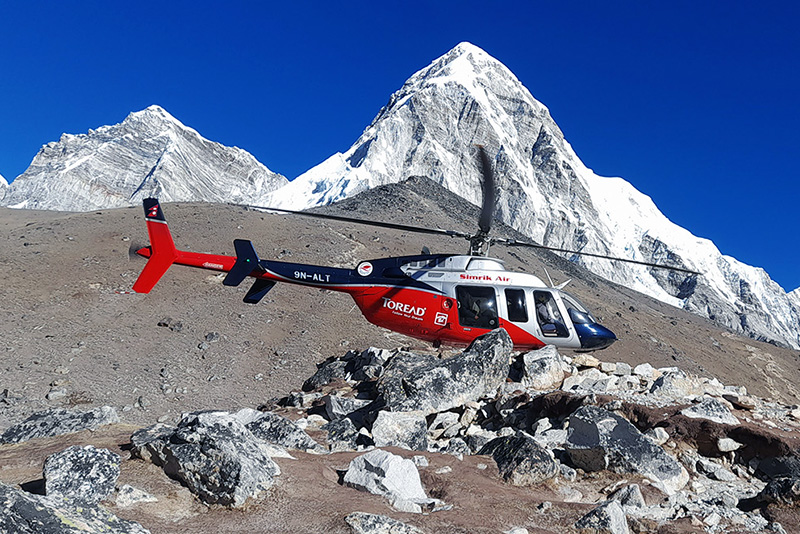
Everest Base Camp Helicopter Tour
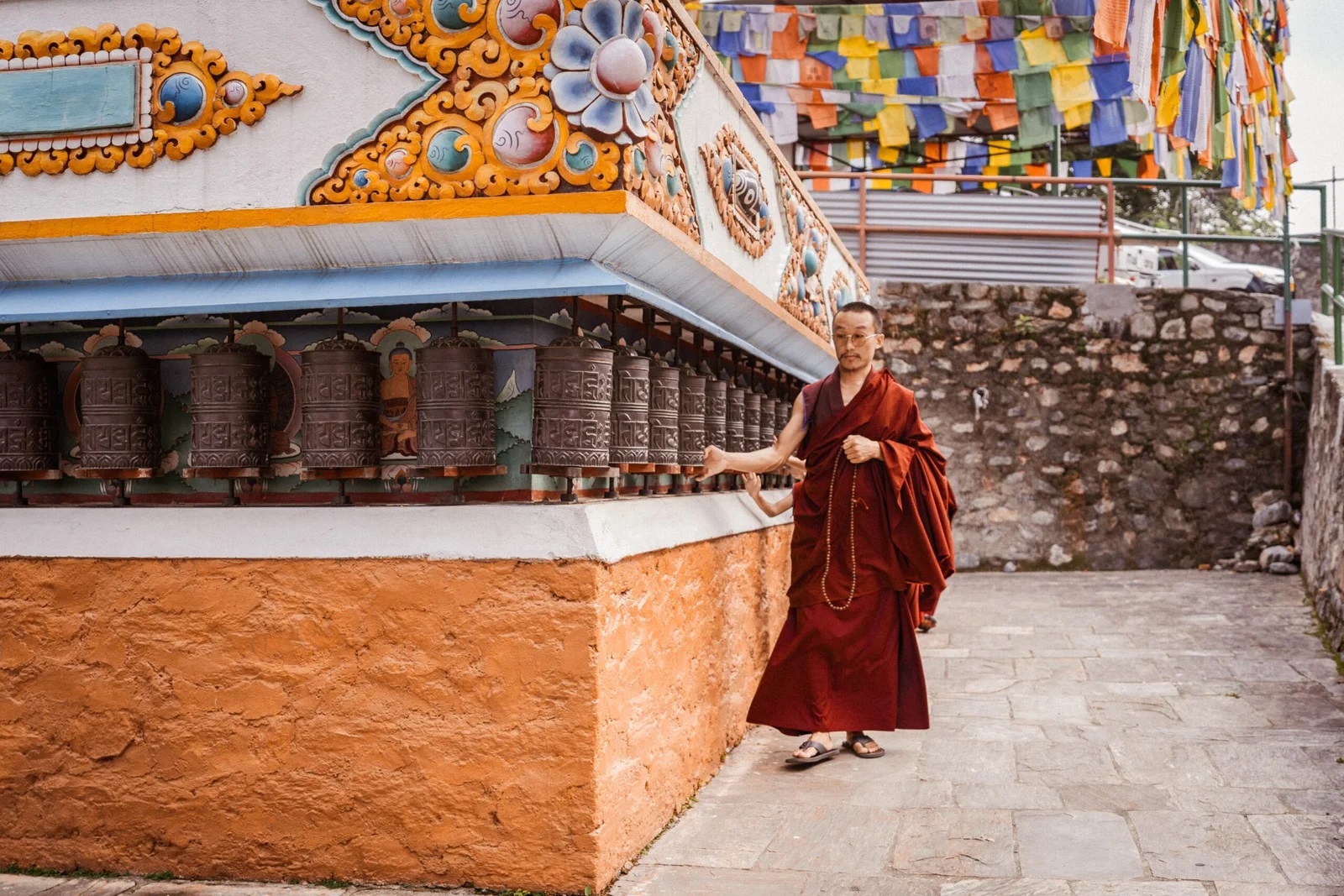
Monastery Stay Tour
